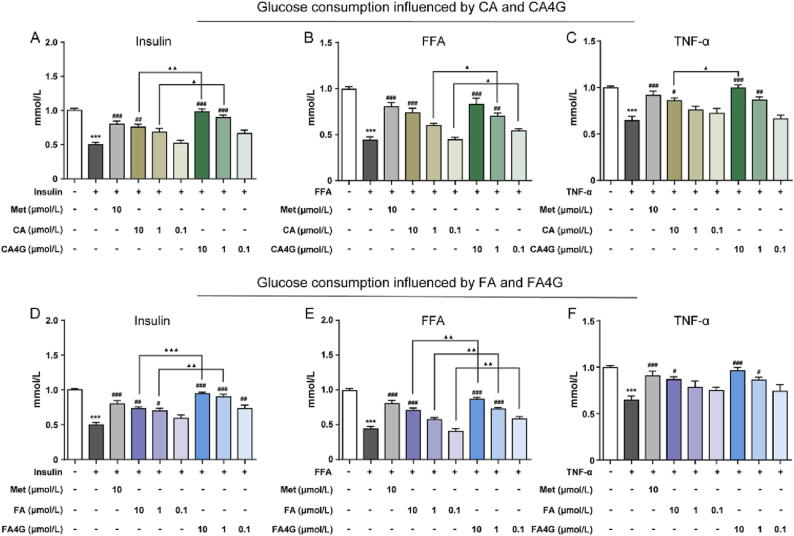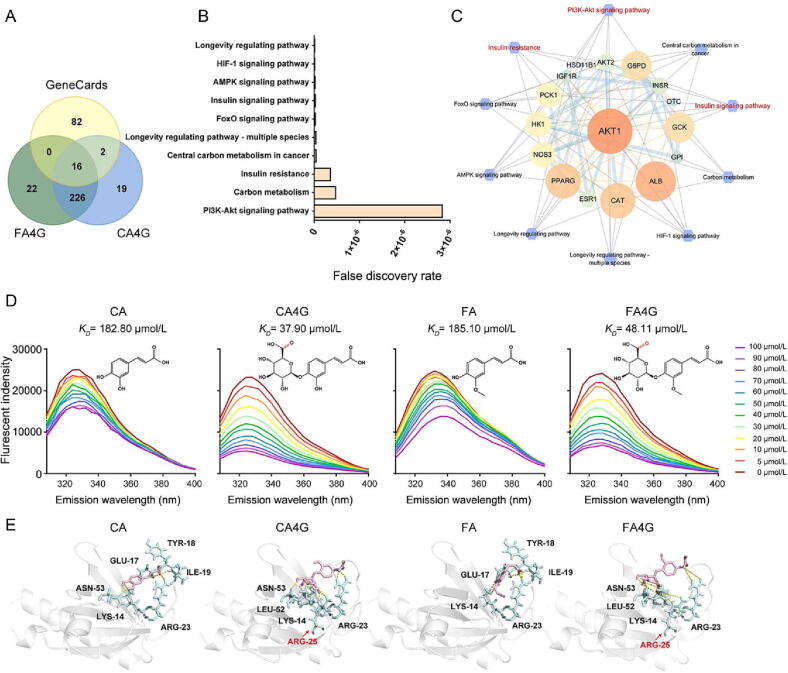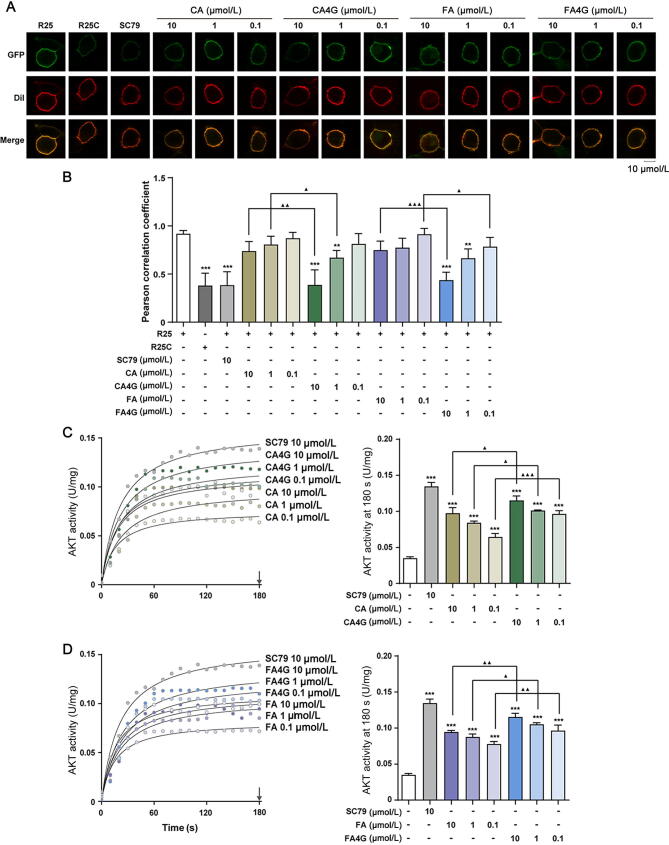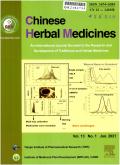Phenolic acids widely exist in the human diet and exert beneficial effects such as improving glucose metabolism. It is not clear whether phenolic acids or their metabolites play a major role in vivo. In this study, caffeic acid (CA) and ferulic acid (FA), the two most ingested phenolic acids, and their glucuronic acid metabolites, caffeic-4′-O-glucuronide (CA4G) and ferulic-4′-O-glucuronide (FA4G), were investigated.
Three insulin resistance models in vitro were established by using TNF-α, insulin and palmitic acid (PA) in HepG2 cells, respectively. We compared the effects of FA, FA4G, CA and CA4G on glucose metabolism in these models by measuring the glucose consumption levels. The potential targets and related pathways were predicted by network pharmacology. Fluorescence quenching measurement was used to analyze the binding between the compounds and the predicted target. To investigate the binding mode, molecular docking was performed. Then, we performed membrane recruitment assays of the AKT pleckstrin homology (PH) domain with the help of the PH-GFP plasmid. AKT enzymatic activity was determined to compare the effects between the metabolites with their parent compounds. Finally, the downstream signaling pathway of AKT was investigated by Western blot analysis.
The results showed that CA4G and FA4G were more potent than their parent compounds in increasing glucose consumption. AKT was predicted to be the key target of CA4G and FA4G by network pharmacology analysis. The fluorescence quenching test confirmed the more potent binding to AKT of the two metabolites compared to their parent compounds. The molecular docking results indicated that the carbonyl group in the glucuronic acid structure of CA4G and FA4G might bind to the PH domain of AKT at the key Arg-25 site. CA4G and FA4G inhibited the translocation of the AKT PH domain to the membrane, while increasing the activity of AKT. Western blot analysis demonstrated that the metabolites could increase the phosphorylation of AKT and downstream glycogen synthase kinase 3β in the AKT signaling pathway to increase glucose consumption.
In conclusion, our results suggested that the metabolites of phenolic acids, which contain glucuronic acid, are the key active substances and that they activate AKT by targeting the PH domain, thus improving glucose metabolism.



| 公司名称 | 产品信息 | 采购帮参考价格 | |
|---|---|---|---|
| 索莱宝 | Insulin from bovine pancreas | ¥67.90~¥9000.00 | |
| 希恩思 | Palmitic acid sodium salt (PA) | ¥19.00~¥7270.00 | |
| 索莱宝 | Metformin hydrochloride (Met) | ¥2900.00~¥3138.90 | |
| 上海源叶 | Metformin hydrochloride (Met) | ¥2900.00~¥3138.90 | |
| 希恩思 | Palmitic acid sodium salt (PA) | ||
| 索莱宝 | 1,1'-Dioctadecyl-3,3,3',3'-tetramethylindocarbocyanine perchlorate (Dil) | ||
| 上海源叶 | Metformin hydrochloride | ||
| 阿拉丁 | Caffeic acid (CA) |
>98.5%
|
|
| 阿拉丁 | Ferulic acid (FA) |
>98.5%
|


